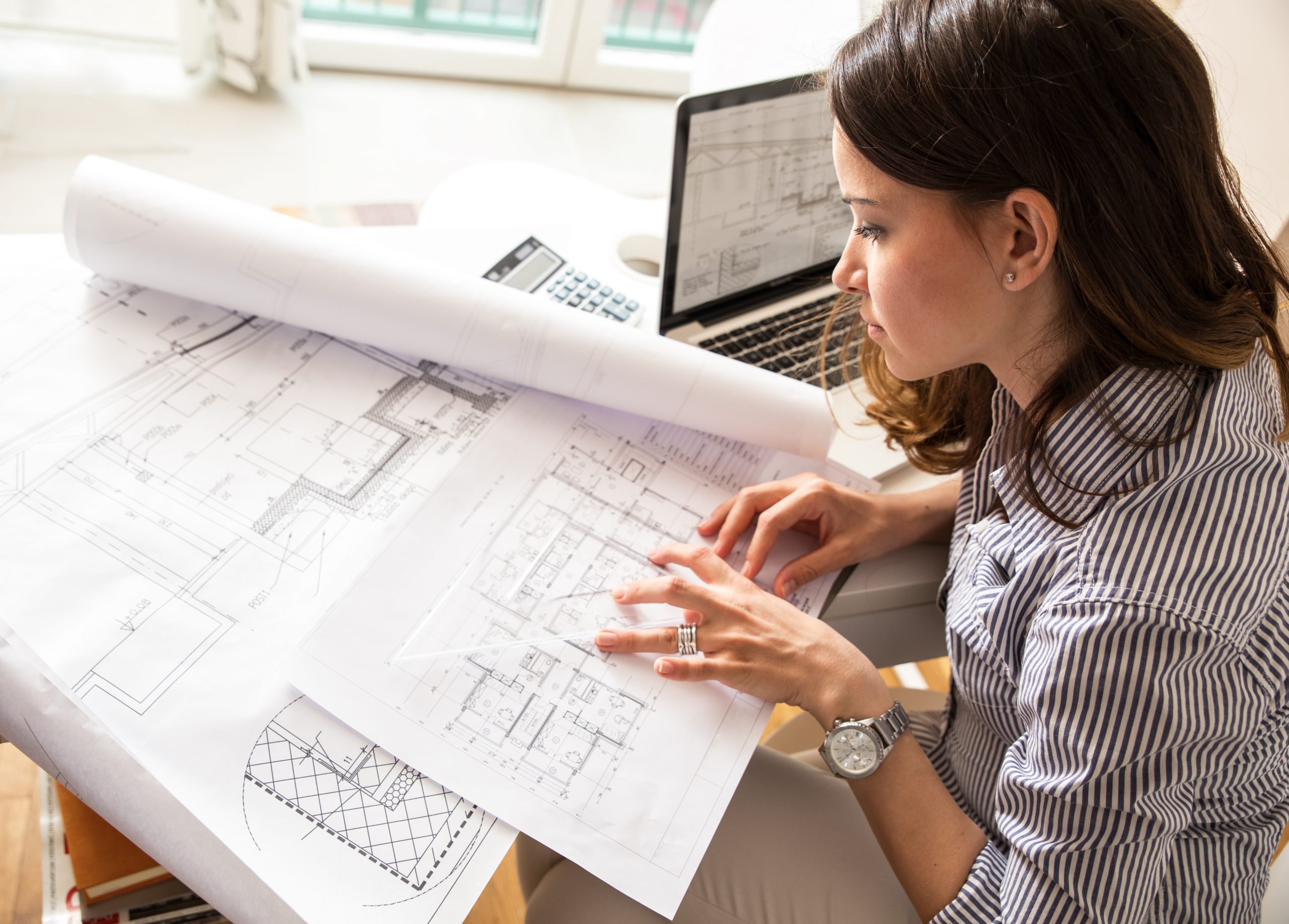Architect Portfolio Samples That Impress Clients Fast
Architect Portfolio Samples That Impress Clients Fast
Blog Article
Recognizing the Diverse Profession Paths Available for Aspiring Architect
As a hopeful Architect, you have a world of profession courses waiting for you. Each course uses unique obstacles and chances to use your imagination and technical knowledge. Whether you're attracted to conventional architecture or the subtleties of lasting design, there's a specific niche that aligns with your interests. Understanding these diverse alternatives can shape your professional journey, yet which instructions will you pick to explore initially?
Typical Design: Designing Frameworks and structures
Traditional architecture concentrates on creating structures and structures that blend capability with visual allure. Your styles can reflect cultural heritage, showcasing regional traditions while fulfilling modern demands.
You'll create skills in composing, model-making, and website analysis, permitting you to envision and interact your concepts successfully. Involving with clients, you'll need to understand their vision and translate it into feasible designs.
Additionally, building codes and sustainability techniques are essential in your job, ensuring your structures are risk-free and eco-friendly. As you grow in your career, you'll locate chances in residential, commercial, or also remediation tasks, each offering unique difficulties. Embracing typical style leads the way for a meeting job that pays homage to the past while shaping the future.
Urban Planning: Shaping Communities and Public Spaces
As an aspiring Architect, you can play a vital function as a metropolitan coordinator, transforming how areas interact and work. By employing neighborhood engagement techniques, you'll ensure that citizens have a voice in forming their environment. Plus, incorporating sustainable layout principles will help develop areas that not only meet today's needs but likewise safeguard the future.
Function of Urban Planners
While numerous might believe of architects as the sole visionaries behind buildings, urban coordinators play a necessary role in forming the wider landscape of communities and public rooms. By teaming up with various stakeholders, you'll help design parks, transport systems, and domestic locations that advertise social communication and accessibility. Your competence in spatial style and area dynamics allows you to visualize future growth while preserving cultural heritage.
Area Interaction Methods
Reliable neighborhood interaction strategies are vital for urban coordinators to ensure that the voices of citizens are heard and valued in the preparation process. To cultivate purposeful dialogue, you should prioritize open forums and workshops where area participants can share their ideas and worries. Usage studies and social networks to get to a broader audience, making certain varied point of views are consisted of. Working together with regional companies can boost count on and promote much deeper links. It is necessary to supply clear info regarding suggested tasks and decision-making processes, enabling citizens to really feel informed and equipped. By proactively incorporating and paying attention feedback, you'll create areas that reflect the neighborhood's demands, inevitably bring about even more sustainable and successful metropolitan environments. Embrace transparency and continual dialogue for long lasting impact.
Lasting Design Concepts
When creating city rooms, integrating sustainable layout principles is critical for creating environments that thrive both environmentally and socially. You ought to start by concentrating on energy effectiveness, utilizing products that reduce waste and advertise recycling. Take into consideration incorporating eco-friendly spaces, like gardens and parks, to enhance biodiversity and enhance air high quality. Advertising walkability and public transport can lessen reliance on cars, cultivating a much healthier neighborhood.
Designing with water conservation in mind is additionally vital-- think concerning rainfall gardens and absorptive surface areas to take care of stormwater. Involving area participants throughout the planning procedure assurances that the rooms you produce satisfy their demands and encourage social communication. By embracing these concepts, you'll add to vivid, sustainable city landscapes that profit everybody.

Landscape Style: Creating Sustainable Exterior Atmospheres
As you discover landscape design, you'll uncover important style concepts that produce gorgeous and functional outdoor areas. Sustainable methods play a vital role in ensuring these environments prosper while lessening environmental influence. Plus, you'll find a variety of job chances that enable you to make an actual difference in exactly how people engage with nature.
Style Principles in Landscape
Comprehending design principles in landscape architecture is vital for developing lasting outside settings that balance with nature. You'll require to ponder aspects like range, balance, and percentage to ensure your styles feel natural and inviting. Incorporating indigenous plants not just improves biodiversity but also decreases water use, making your landscape durable. Assume about the circulation of space and exactly how individuals interact with it; paths and seating locations need to invite expedition and leisure. Furthermore, take note of seasonal changes, making with products that complement the environments year-round (Architect). By prioritizing sustainability and appearances, you can create exterior areas that enrich the area and advertise well-being. Accepting these concepts will set a strong foundation for your occupation in landscape design.
Sustainable Practices Introduction
Lasting methods in landscape architecture not only concentrate on visual appeals but additionally focus on ecological health and source conservation. By integrating indigenous plants, you improve biodiversity and minimize the requirement for chemical fertilizers and pesticides. Implementing effective irrigation systems aids save water and minimizes runoff, shielding neighboring ecological communities. You can develop areas that promote soil wellness, such as using organic products and practicing permaculture concepts. In addition, incorporating eco-friendly infrastructure, like rain yards and porous pavements, aids in stormwater monitoring and decreases urban warm. You add to a much healthier earth and supply spaces that cultivate area connection when you produce outside atmospheres with sustainability in mind. Inevitably, these techniques assure your layouts profit both people and the setting for many years to find.
Career Opportunities Expedition
With a solid structure in lasting techniques, landscape architecture supplies a variety of profession paths that permit you to make a significant influence on the setting. You can work as a landscape designer, creating aesthetically pleasing and useful outside rooms, or concentrate on ecological restoration, helping to revive broken ecological communities. Urban planners usually team up with landscape architects to create environment-friendly rooms in metropolitan setups, improving city livability. If you're passionate about education, consider becoming a landscape style teacher, inspiring future generations. In addition, you could deal with nonprofits concentrated on environmental sustainability or take part in research study to introduce brand-new practices. Each course not only shapes gorgeous settings but likewise promotes a healthier world for future generations.
Sustainable Style: Concentrating On Eco-Friendly Practices
As you explore your career in design, welcoming environment-friendly methods can set you apart in a competitive field. Sustainable layout concentrates on developing structures that lessen environmental impact while boosting passenger health. By including eco-friendly products, energy-efficient systems, and lasting building techniques, you'll add to a greener future.
Beginning by obtaining understanding of green qualifications like LEED or BREEAM, which can boost your qualifications. Think about exactly how all-natural light, air flow, and thermal effectiveness can enhance layout. Work together with engineers and ecological specialists to introduce options that reduce waste and preserve resources.
Don't fail to remember the relevance of area involvement-- interesting local stakeholders can influence layouts that balance with the environment. As customers progressively prioritize sustainability, your expertise in environment-friendly practices will find here certainly not just attract jobs but additionally fulfill your passion for responsible architecture. Welcome this critical element of the career, and see your career grow.
Historic Preservation: Protecting and Restoring Cultural Heritage
While you start on your architectural journey, consider the essential duty of historic conservation in additional reading keeping our social heritage. This field concentrates on the defense and remediation of considerable buildings, sites, and structures that tell the tales of our past. By taking part in historical conservation, you'll help guard the architectural legacy that forms neighborhood identity.
As a historical conservation Architect, you'll evaluate historical value and assess the problem of frameworks. You'll function very closely with chroniclers and guardians to ensure genuine repair strategies are used. This career course permits you to blend creative thinking with study, enabling you to create solutions that respect original products and workmanship.
Your job not only adds to sustainability by recycling existing buildings yet also fosters a feeling of pride within areas. Embracing this course will help you become a guardian of background, preserving the tales and visual appeals that enhance our lives.
Inside Design: Enhancing Indoor Spaces
Historic preservation and interior style both share a dedication to enhancing the developed setting, however they focus on different aspects. While historic conservation stresses keeping a framework's cultural and historic worth, interior architecture zeroes in on maximizing interior rooms for capability and aesthetic appeals.
As an ambitious Architect, you'll discover that interior architecture enables you to mix creativity with technical skills. You'll make areas that not just look good yet likewise promote comfort and effectiveness. This field entails recognizing just how light, shade, and materials engage within a room, impacting state of mind and use.
You'll work with numerous jobs, from property homes to commercial offices, ensuring that each atmosphere satisfies the demands of its owners. By focusing on user experience, you can transform insides into inspiring and functional rooms, making a considerable effect on just how people connect with their surroundings. Accept the chance to improve interior atmospheres and shape the way individuals function and live.
Industrial Layout: Combining Performance With Aesthetic Appeals
Industrial style plays an essential duty in producing products that seamlessly blend aesthetic appeals with functionality, making sure that what you utilize daily is not only visually enticing but also useful. As a hopeful Architect, you might engage yourself in this field, concentrating on creating every little thing from furniture to customer electronic devices. Your work my link involves recognizing customer requirements, products, and producing procedures, permitting you to develop ingenious solutions that boost daily experiences.
In commercial layout, you'll usually work together with marketers, engineers, and suppliers, making certain that your styles are not only beautiful but additionally viable. This job path supplies a vibrant environment where creativity satisfies functionality, making it a gratifying selection for engineers interested in forming the products of tomorrow.
Often Asked Questions
What Educational Qualifications Do I Need to End Up Being a Designer?
To come to be a designer, you'll need a specialist degree in design, generally a Bachelor's or Master's. Additionally, you'll need to complete a teaching fellowship and pass the Architect Enrollment Exam to exercise lawfully.
Are There Accreditation Requirements for Various Building Career Paths?
Yes, there're qualification requirements for different architectural paths. Architect. You'll need to pass tests, full internships, and often pursue specialized training, depending upon your selected emphasis, like landscape architecture, urban design, or historical preservation
What Software Abilities Are Essential for Engineers Today?

Just How Can I Gain Practical Experience While Studying Design?
You can gain practical experience by interning at building companies, joining style competitions, offering for neighborhood jobs, or collaborating with schoolmates on real-world tasks. These chances enhance your abilities and construct beneficial connections in the market.
What Work Opportunities Exist Outdoors Conventional Architecture Firms?
You can discover different work opportunities outside traditional design firms, like city planning, interior decoration, landscape architecture, construction management, realty growth, and even functions in sustainability consulting. Each offers special difficulties and benefits.
Whether you're drawn to standard architecture or the nuances of lasting layout, there's a specific niche that straightens with your rate of interests.When making city areas, including lasting style principles is vital for creating atmospheres that flourish both environmentally and socially.As you check out landscape design, you'll find necessary layout principles that create gorgeous and functional exterior spaces.Recognizing design concepts in landscape style is important for producing lasting outside atmospheres that harmonize with nature.In commercial layout, you'll commonly collaborate with marketing experts, engineers, and makers, ensuring that your layouts are not just attractive however also possible.
Report this page